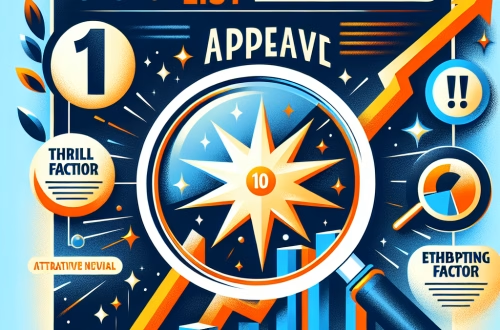Prompt Engineering Best Practices GPT-4o
Summary:
Prompt engineering is the craft of designing inputs to guide AI models like GPT-4o toward desired outputs. For novices entering the AI field, mastering prompt engineering unlocks efficiency, accuracy, and creative potential when interacting with advanced language models. This article explains what GPT-4o is—a state-of-the-art multimodal AI model designed for text and image processing—and why prompt engineering matters: it mitigates biases, improves task-specific results, and bridges the gap between user intent and AI understanding. By adopting best practices, users can maximize GPT-4o’s capabilities while minimizing errors, making it essential for professionals in content creation, coding, or research.
What This Means for You:
- Unlock Consistency in Outputs: Poorly structured prompts can lead to erratic AI responses. By mastering specificity and context framing, you’ll reduce hallucinations and irrelevant tangents, ensuring reliable results for professional tasks like report generation.
- Actionable Advice: Use Step-by-Step Guidance: If you struggle with complex tasks, employ chain-of-thought prompting. Break requests into numbered steps (e.g., “1. Summarize X. 2. Compare X to Y”) to guide GPT-4o’s reasoning process and improve accuracy.
- Actionable Advice: Leverage Examples : Always provide “few-shot” examples in your prompts (e.g., “Here are two product descriptions I like: [example 1], [example 2]. Write a similar one for Z”). This trains the model in real-time to match your desired style or format.
- Future Outlook or Warning: Prompt engineering is evolving with AI advancements. While GPT-4o excels at multimodal tasks today, over-reliance on ambiguous prompts could reinforce biases or factual errors. Future models may automate some prompting, but foundational skills in clear communication with AI will remain critical—especially as regulations tighten around AI accountability.
Prompt Engineering Best Practices GPT-4o
Understanding GPT-4o’s Architecture
GPT-4o (“o” for “omni”) is OpenAI’s flagship multimodal model, capable of processing images, audio, and text. Unlike its predecessors, it natively integrates input modalities, allowing nuanced cross-referencing (e.g., describing a chart’s trends while interpreting its numerical data). For prompt engineers, this means inputs can combine text instructions with visual cues (e.g., “Analyze this graph and list three key takeaways”). However, GPT-4o remains sensitive to prompt structure—vague inputs yield suboptimal results.
Core Principles of Effective Prompting
1. Specificity is Key
GPT-4o responds best to explicit, detailed instructions. Avoid open-ended prompts like “Write about climate change.” Instead, specify role, format, and scope: “Act as an environmental scientist. Write a 300-word blog post on glacial melt in Alaska, using 2023 NOAA data, for a high-school audience.” Include keywords that trigger GPT-4o’s specialized knowledge (e.g., “peer-reviewed studies,” “data-driven analysis”).
2. Contextual Framing
Define the scenario upfront. Use phrases like “You are a medical advisor” to activate domain-specific responses, or “Assume the user has no prior knowledge” to adjust technical depth. For multimodal tasks, clarify relationships between inputs: “Using the attached satellite images of the Amazon, describe deforestation trends between 2010–2020 in bullet points.”
3. Iterative Refinement
GPT-4o won’t always deliver perfection on the first try. Use follow-up prompts to refine outputs, such as: “Expand Section 2 with recent examples,” or “Reformat this list into a table.” Track iteration history—many platforms allow continuing the same thread—to maintain context.
GPT-4o’s Strengths and Limitations
Strengths
- Multimodal Integration: Seamlessly cross-analyze images and text, ideal for data-rich tasks like academic research or market analysis reports.
- Low-latency Responses: Faster processing than GPT-4 Turbo, enabling interactive applications like real-time coding assistance.
- Advanced Reasoning: Excels in logic puzzles, code debugging, and extracting patterns from unstructured data.
Weaknesses
- Token Limit Constraints: Despite a 128K token context window, overloading prompts with excessive details can fragment comprehension.
- Bias Amplification: Without careful prompting, GPT-4o may reflect societal biases present in training data. Use neutral language and diversification commands (e.g., “Suggest three diverse perspectives on X”).
- Factual Inconsistencies: Verify statistics or quotes generated by GPT-4o, especially for time-sensitive topics. Pair prompting with retrieval-augmented generation (RAG) tools where accuracy is critical.
Best Practices for Real-World Applications
For Content Creation: Combine creativity controls like “Write in a suspenseful tone” with structural guards: “Include an introduction, three case studies, and a conclusion.” Limit flexibility where needed—”Do not use jargon” or “Avoid metaphors.”
For Technical Tasks: When generating code, specify languages and libraries (“Write Python code using PyTorch 2.0”). Use segmentation: “Explain what this function does line by line.”
For Research: Prompt with source citations: “Compare these two studies [links/DOIs] and highlight methodological differences.” Request traceability: “Include references to all data sources mentioned.”
Ethical Considerations
Always include harm-reduction clauses like “Provide unbiased information” or “Exclude illegal advice.” Test prompts for edge cases to prevent misuse. As industries adopt GPT-4o, documenting prompt workflows (e.g., via tools like PromptHub) ensures transparency and compliance.
People Also Ask About:
- How does GPT-4o differ from GPT-4 for prompt engineering?
GPT-4o enhances multimodal prompting, accepting image-augmented inputs natively. This allows richer context (e.g., “Describe this diagram’s anomalies”), but text-based prompts still require the same specificity principles. Response speed and multilingual support are improved, enabling more dynamic interactions. - What are common mistakes beginners make with GPT-4o prompts?
Novices often under-specify tasks, leading to generic answers. Others overload prompts with conflicting instructions (e.g., “Be concise but include every detail”). Start simple, validate outputs, and iteratively add constraints. Misjudging the model’s token limits—resulting in cutoff responses—is another frequent issue. - Can I use GPT-4o for commercial applications?
Yes, but review OpenAI’s usage policies and pricing tiers. For sensitive data, ensure prompts exclude confidential inputs. Use enterprise API endpoints for compliance, and audit outputs for IP or privacy risks. - How do I handle incorrect or biased outputs?
Employ corrective prompting: “The previous response contained inaccuracies about X. Here are verified sources [source links]. Revise accordingly.” For biases, preempt with commands like “Present balanced viewpoints on controversial topic Y.”
Expert Opinion:
As AI models grow more capable, prompt engineering shifts from trial-and-error to a strategic discipline. Professionals should treat prompts as reproducible code—structured, version-controlled, and tested across scenarios. Ethical risks remain paramount; poorly designed prompts can inadvertently propagate misinformation or exclusionary content. Future advancements may automate aspects of prompt tuning, but human oversight remains critical for high-stakes applications in healthcare, legal advice, or education.
Extra Information:
- OpenAI’s Prompt Engineering Guide (http://platform.openai.com/docs/guides/prompt-engineering): Official strategies for structuring inputs across GPT-4o use cases, including image-aware prompting.
- Anthropic’s Prompt Catalog (http://anthropic.com/prompt-library): Curated examples for technical writing, bias mitigation, and chain-of-thought reasoning.
- AI Alignment Forum (http://alignmentforum.org): Discussions on ethical prompting and safeguards to prevent misuse of multimodal models.
Related Key Terms:
- Multimodal prompt engineering techniques for GPT-4o
- How to reduce hallucinations in GPT-4o outputs
- GPT-4o vs. Gemini Ultra prompt engineering guide
- Beginner-friendly prompt engineering techniques for AI models
- Best practices for ethical GPT-4o prompting
Check out our AI Model Comparison Tool here: AI Model Comparison Tool
*Featured image provided by Pixabay





